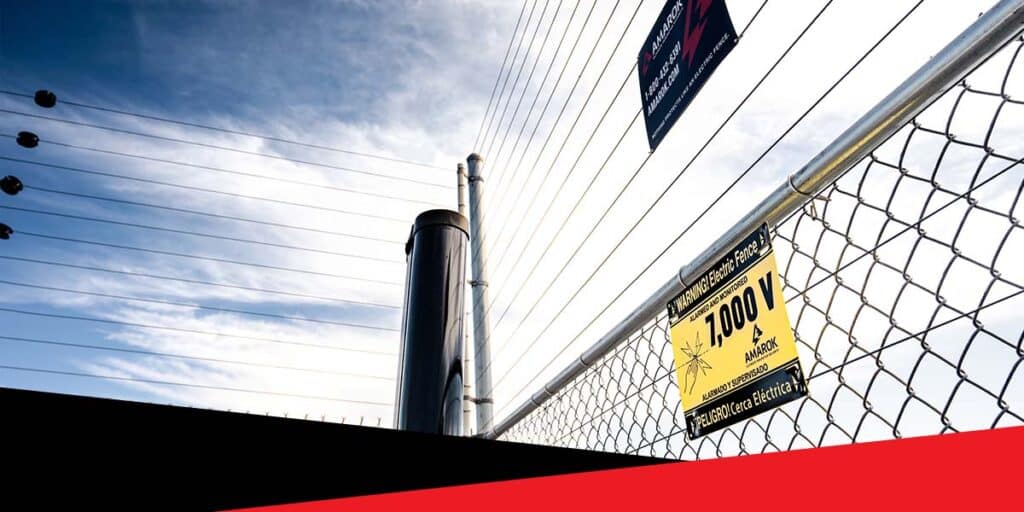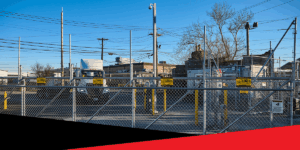It should be no surprise to learn that thieves target construction sites like wolves hunting sheep. They’re easy targets, and most sites are poorly lit and unstaffed at night.
There’s another reason construction sites are so popular with thieves — they are littered with high-value items to steal. Construction site security can be challenging, but you can stop opportunistic criminals in their tracks with the right perimeter security.
Increased Construction Site Theft Linked to Lumber Prices
Let’s start with the base materials, like wood. Prior to the COVID-19 pandemic’s untimely arrival, trade tariffs had already boosted the lumber price. Then, COVID-19 got going full-speed and forced the U.S. lumber industry to stop most of its production. Nobody freaked out about this because the housing market in 2021 was expected to take a dive anyway. Only, it didn’t.
For reasons not even the CDC can explain, the pandemic drove an unprecedented demand for houses, which caused a boom in new home construction across the country. Case in point, new houses have historically accounted for only 10% of available homes on the market. In 2021, they made up 25% of the current homes for sale.
The result is an unforgettable economics lesson. The low supply and high demand for lumber resulted in price increases starting in April 2020. Any thief would love to get their hands on it. Lumber is valuable, easy to steal, and a cinch to resell. Another common construction site material, copper, is even more appealing to thieves thanks to its tremendous value in the energy sector.
However, base materials are merely the appetizers in this criminal’s buffet. Your construction site also provides an all-you-can-steal supply of appliances, power tools, and heavy equipment.
This is what your construction site looks like to thieves. And they do come back for seconds.
Why Is Construction Equipment Theft Such a Big Deal?
Construction site theft is so prevalent that you might be tempted to write it off as one of those unavoidable things. If you can prevent it, though, why wouldn’t you? After all, it has some pretty significant consequences.
If you’ve ever arrived at a construction site and realized you can’t work because half of your equipment or materials have been stolen, you understand the havoc it can cause. Delays can erode your relationships with clients and subcontractors and cause projects to drag on unnecessarily. Theft incidents also impact team morale and cause distrust among your crew members.
The lack of construction site security has implications outside the cost of replacing stolen items. It can drive up your insurance premiums and even land you in the middle of legal disputes.
A Simple Question of… ‘When’ Will Theft Happen to Your Construction Site?
Right about now, you’re probably wondering if thieves will target your site. A more realistic question would be, “When?”
If criminals haven’t already cased your construction site, it’s because you’re building a police station. That’s the only plausible reason. AMAROK has been in the commercial property security business for more than 40 years, so trust us on that.
Still not convinced? Just look at the numbers. Construction site theft costs the industry up to $1 billion annually.
The recovery rate of stolen materials is less than 30%, meaning you will likely not get much of it back.
How to Prevent Construction Site Theft
Let’s debunk a myth. Being fully insured is NOT a theft-prevention tactic. Your insurance policy may help you recover the value of the stolen materials or equipment. It won’t replace the time you spend handling the issue, and it won’t cover the cost of opportunities lost to reputational damage.
Real construction site theft prevention is a deliberate proactive action you take with one goal in mind — to make it as hard as possible for someone to steal from you.
4 Construction Site Theft Prevention Strategies
Despite the alarming statistics, you can do plenty of things to stop thieves in their tracks. One security measure is not enough. Instead, and trust us on this, you need layers of security. You need to cover your bases. Take the following steps to beef up your security before you become another statistic.

1. Focus on Theft Prevention Policies
Without a security plan, your site remains at risk. It’s time to get one. Make sure all your associates and teams know the policy. It should include things like, “Using construction materials, tools, or equipment for personal projects is strictly prohibited.”
Alongside your policies, create a security-focused culture on-site. Your team should know about your policy and understand why it’s critical to prevent theft. They should also understand your physical security system and maintain security knowledge to reinforce the importance of vigilance.
2. Secure Your Site
If you think hooking up some fancy video cameras constitutes “site security,” think again. Thieves steal the cameras too.
Surrounding your site with a 7,000-volt perimeter security fence is a better approach. Portable electric fences are also available for temporary jobsites.
Lighting is another critical security measure. Thieves like to work in the dark — it’s one of the many reasons they target construction sites. The more you can illuminate your equipment, the more likely they move on without making an attempt to steal.
And if you’re serious about construction site theft prevention, then consider a layered security approach. Our FORTIFEYE™ system integrates electric security fencing, video surveillance and monitoring to provide you with a proven crime prevention strategy.
One of the best things about our systems is that they run on solar power. This capability keeps your equipment safe regardless of power outages and even in very remote locations.
3. Secure Your Equipment
Start by not leaving the keys in the ignition. You don’t have to go crazy or expensive with the next step — it can be as simple as removing batteries or wheels. Remember, the goal is to make it difficult for anyone to steal from you.
Wherever possible, lock up your materials. This practice might mean you need temporary storage, but chains will also do the trick. Put valuable items in a designated, well-lit area, and focus your efforts on security in that space.
4. Keep Detailed Records
Equipment manufacturers created a 17-digit product identification number (PIN) protocol, starting with models built in 2000. Engrave all of your equipment with its number, and catalog it all in a spreadsheet or ledger, just in case.
Some Key Points to Remember
And so, in this crazy world of construction where there’s a shortage of lumber but an excess of thieves, here’s a summary of the main points we hope you’ll take away:
- The rising price of lumber is increasing the theft risk on construction sites.
- You CAN take action to reduce that risk.
- 99% of our clients have yet to experience a break-in after installing our electrified perimeter security fences. Just ask them.
Stop Theft Before It Happens With AMAROK
Construction site theft is rampant, but you have the power to make it as difficult as possible for criminals. When they see your perimeter security, they’ll think twice about trying to access your equipment. Construction site security starts with an electric perimeter fence.
As an industry leader in perimeter security, AMAROK can help you protect your assets. Our electric fencing solutions provide the layered security that you need. The Electric Guard Dog™ keeps criminals at bay in three ways — a safe but memorable 7,000-volt shock, a physical deterrent and an alarm. Based on your needs, we’ll integrate any combination of security enhancements.
When you work with AMAROK, there’s no upfront investment. We’ll install, maintain, and upgrade your perimeter security for a manageable monthly charge. Book a free threat assessment today, or contact us at (803) 786-6333.





